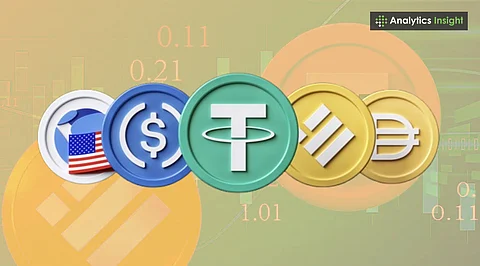

Stablecoin networks are faster and cheaper than traditional banks and card networks.
Circle and Stripe launch proprietary blockchains to speed up stablecoin payments.
Regulatory frameworks like the GENIUS Act ensure market stability and user confidence.
Stablecoins are growing at an impressive rate. In August 2025, the total market value of stablecoins reached $274.74 billion. Stablecoins are digital currencies designed to maintain a stable value, usually tied to the US dollar or other currencies.
They are used by businesses and individuals to make payments, transfer money, and invest in digital assets without facing the high volatility of traditional cryptocurrencies.
One of the key drivers behind this expansion is the development of new blockchains that are specifically for stablecoin transactions. Such operators as Circle and Stripe are pioneering by introducing their blockchains.
These platforms are intended to process payments cheaply, quickly, and securely. Through the development of their infrastructure, such operators can support huge numbers of transactions with efficiency and minimize reliance upon existing networks.
Circle, the creator of the USDC stablecoin, has launched a new blockchain called Arc. Arc is a Layer-1 blockchain, which means it works on its own and does not depend on another blockchain. It is made to complete stablecoin transactions quickly and with low fees. Arc helps Circle control its operations better and reduce costs and delays for users. The launch of Arc shows that stablecoin companies are now building the systems behind the coins, not just issuing them.
Also Read: Arthur Hayes Predicts Stablecoin Liquidity Will Drive Bitcoin and Bank Rally
Stripe, a large online payment company, is also entering this area with a blockchain called Tempo. Tempo is made to handle fast payments and a large number of transactions at the same time. Its goal is to make payments almost instant and cheap. Stripe wants to give better service to customers and compete with traditional financial networks by using its blockchain.
The growth of these blockchains is challenging companies like Visa and Mastercard. These companies have led payments for decades and handle billions of dollars every day. But blockchain payment systems are faster and cheaper, and they could take customers from these old companies over time.
Analysts say that if stablecoin blockchains keep growing, Visa, Mastercard, and other banks will need to do something new or risk becoming outdated.
Regulation is also important in shaping this market. The GENIUS Act, passed in the United States in July 2025, sets clear rules for stablecoin issuers. The act requires stablecoins to be fully backed by reserves and businesses to follow the Know Your Customer rules. The rules are meant to make the market safer and give users confidence. At the same time, companies like Circle and Stripe must follow these rules as they grow and innovate.
Some of the legacy banks are not resting on their laurels. JPMorgan Chase, for instance, has created its stablecoin named JPM Coin to facilitate transactions between banks. Other US banks are said to be working on a shared stablecoin to rival the private sector alternatives. These actions indicate that the banks see the future potential of blockchain technology and wish to safeguard their share.
The growth of proprietary blockchains signals a change in the payment universe. Stablecoins are not a digital representation of money anymore; they belong to a complex system that has the potential to enhance speed, lower costs, and secure payments.
New blockchain systems and traditional payment infrastructures will compete to define the future of finance. Businesses need to find an equilibrium between innovation and regulation to ensure the market is stable and reliable.
Also Read: GENIUS Stablecoin Bill Heads to House as Lawmakers Split Over Crypto Reform Strategy
The expansion of stablecoin blockchains illustrates that the financial landscape is shifting. Circle and Stripe are pushing the technology envelope while Visa, Mastercard, and the old banks are confronted with new threats.
The response of these firms will decide who controls the next wave of digital payments. As the market for stablecoins expands, its influence will be noticed across industries and globally.
